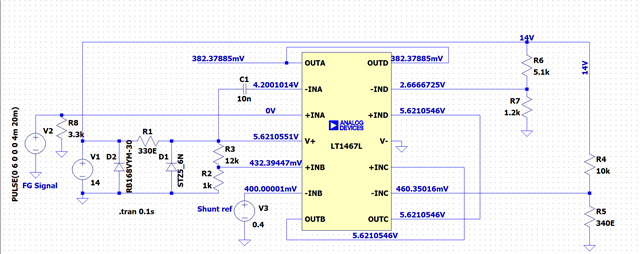Other Parts Discussed in Thread: TLV9054
Tool/software:
-
The output of the op-amp was showing an unexpected offset voltage of ~3.4V.
-
To resolve this, we added a 100Ω resistor in series between Pin 14 (OUTD) and Pin 1 (OUTA), which helped bring the output offset down to 0V.
-
During a fault condition, Pin 13 rises to 5.8V (above the reference of 5.6V), yet the output remains high, whereas we expect the output to go low to disable the pulse signal.
-
Whether this configuration is valid for fault signal suppression,
-
Why the output does not respond correctly to the reference threshold being exceeded,
-
Any changes or recommendations for reliably achieving output cutoff during fault conditions.




